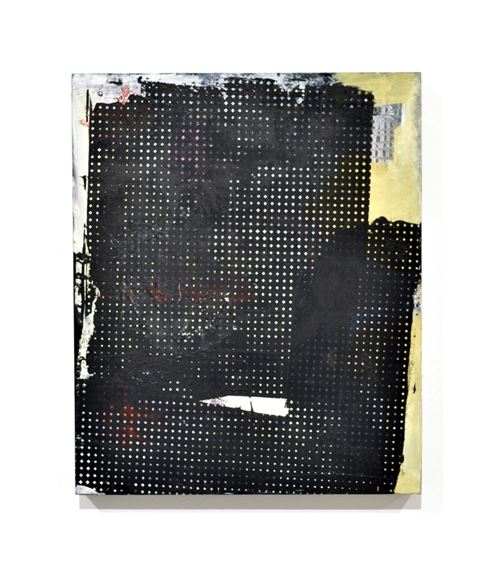Eva Mitala: Float
Float constitutes a vast and subtle meditation on the reality of urban living. Recognizing absence as the presence of a conscious activity within the brain, these works are a result of a meditative process that engages what is considered trash, forgotten and unwanted as a starting point to honor the decay and the beauty of things modest, humble and impermanent. Impermanence (literally, “the pathos of things”) has probably the clearest link: the works embrace the wear, tear, and sometimes damage that comes with age. They reveal the transient and mystical as well as the mundane and obvious as features change.
The paintings were created using in studio silkscreen techniques, which translate the defaults and irregularities of the process into an aesthetic that simplifies the form and prioritizes material experimentation. In these works, the actual silkscreen canvas takes the place of the brush and when the ink comes in contact with paper or cotton, instead of a technique for mass production, the process becomes a way to produce unique prints. The result sometimes appears blurry – as if frozen in a permanent state of becoming, like the ethics of Wabi-Sabi that focus on finding beauty within the imperfections and accept peacefully the natural cycle of growth and decay.

Float constitutes a vast and subtle meditation on the reality of urban living. Recognizing absence as the presence of a conscious activity within the brain, these works are a result of a meditative process that engages what is considered trash, forgotten and unwanted as a starting point to honor the decay and the beauty of things modest, humble and impermanent. Impermanence (literally, “the pathos of things”) has probably the clearest link: the works embrace the wear, tear, and sometimes damage that comes with age. They reveal the transient and mystical as well as the mundane and obvious as features change.
The paintings were created using in studio silkscreen techniques, which translate the defaults and irregularities of the process into an aesthetic that simplifies the form and prioritizes material experimentation. In these works, the actual silkscreen canvas takes the place of the brush and when the ink comes in contact with paper or cotton, instead of a technique for mass production, the process becomes a way to produce unique prints. The result sometimes appears blurry – as if frozen in a permanent state of becoming, like the ethics of Wabi-Sabi that focus on finding beauty within the imperfections and accept peacefully the natural cycle of growth and decay.

 ARTISTS
ARTISTS








